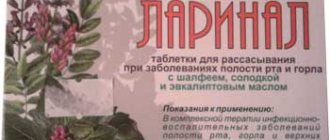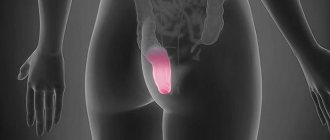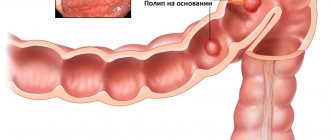Anal sex is an exciting experience, but many people are hesitant to try it. You almost certainly have some opinions about anal sex, even if you've never tried it. In fact, sometimes the people with the strongest views haven't even tried.
If you do it right, anal sex can be amazing for both partners. You just need to make sure you have a complete understanding before you start. With this guide, you can dive into the world of anal play with all the necessary preparation.
Anal play for women
Many people talk about anal in the context of men; after all, this is the demographic that benefits most from anal sex, right? Wrong! Women can enjoy anal just as much as men.
Anal orgasms
Most women don't have a prostate, but that's actually not the only way to enjoy anal sex. When it comes to anal sex, even without a prostate, there's a triple threat of sorts.
First, the clitoris; the clitoris is actually shaped like a triangle, and the “clitoral legs” near the anus can be stimulated during anal sex. Anal also indirectly stimulates the G-spot. Finally, there is a place located deep inside the vagina near the back that can have a similar effect to the G-spot, which is also indirectly stimulated.
When all this happens at the same time, you can experience an orgasm simply from penetration.
Double penetration
If you want even more, you can try double penetration. If you have sex with one partner, this is usually achieved through sex toys and natural penetration; sex with multiple partners can naturally also lead to double penetration. There are also double penetration dildos that are perfect for the job.
Strapons
If your partner is interested in penetration, you can also do this with a strap-on. Strap-ons often have a feature that stimulates the vulva and clitoris during thrusting, making it even more natural. There are strap-ons specifically designed for prostate stimulation, with a more traditional dildo attachment, and even to facilitate double penetration.
Diagnostics
A specialist proctologist determines the etiology of pain in the anus. Men with prostate pathology are examined by an andrologist. Based on the survey and physical examination, the patient is prescribed the following diagnostic procedures:
- Proctological examination.
Includes assessment of the condition of the anus, examination in rectal speculums, digital examination, and other techniques. Makes it possible to detect cracks, fistulas, signs of hemorrhoids, foreign objects, neoplasia, inflammatory infiltrates. - Rectal examination of the prostate.
Indicated for suspected prostatitis or prostate cancer. During the procedure, the doctor determines the shape, size and structure of the prostate, identifies signs of inflammation, and space-occupying formations. - Ultrasound methods
. Patients are referred for transrectal ultrasound of the rectum to diagnose cancer, polyps, hemorrhoids, cysts, fistulas, and injuries. Ultrasound of the prostate can be performed transrectally or transabdominally; it confirms inflammatory changes, areas of calcification, and changes in echostructure characteristic of a cancerous tumor. - Endoscopic techniques
. Sigmoidoscopy and anoscopy are highly informative for erosions, ulcers, inflammatory processes, polyps, malignant tumors, fistulas, and internal hemorrhoids. It is possible to collect material for subsequent morphological research. - Anal manometry.
The technique is recommended for proctalgia, fecal incontinence, and other conditions accompanied by a decrease or increase in the tone of the anal sphincter. - Lab tests
. A general scatological examination is prescribed to identify signs of inflammation and bleeding, and to detect parasites. Based on the culture results, the etiology of the inflammatory process is determined. According to cytological or histological examination, the nature of the tumors is determined. - Other methods
. For diseases of the colon, plain radiography of the colon, colonoscopy, and biochemical analysis of stool are performed. In some cases, diagnostic laparoscopy is required. A PSA test is recommended for men with suspected prostate cancer.
Anal play for men
It is often taken for granted that a man will be a partner during anal play. But in fact, with the right toys, you may find that you enjoy penetration as much or more than being penetrated by someone else.
Prostate massagers
The all-important prostate is one of the things that makes anal sex so great for men. The prostate massager has a special shape that helps it work on the prostate as easily as possible. You can let your partner do it or do it yourself; just feel forward until you feel it.
What does it mean? You'll know when you feel it. This is similar to the feeling you get right before you ejaculate and can feel amazing over a long period of time.
Other anal toys
Prostate massagers are not the only thing you may find useful during anal sex.
Anal beads are a great option if you like the feeling of being “full,” especially because they allow you to take whatever you feel comfortable with and stop when you're full. Butt plugs can also be a fun option and a great way to introduce anal play into the context of regular vaginal sex.
Take a look at the different anal sex toys available and see if you find something you like.
Never be afraid to try something new
For many, anal play is a completely new sensation and it can be scary to experience. However, you should never be afraid to experiment in the bedroom. Whether it's exploring kinky toys or cautiously trying out anal sex, you should always feel comfortable trying something new.
It doesn't matter if you're thinking about anal for the first time or you've been interested in it for years but were embarrassed to say anything. You should talk to your partner about trying anal sex. Who knows - maybe they are interested, but at the same time they were embarrassed to talk about it. This can only improve your sex life.
Anal sex in numbers. Solid statistics of official science
According to statistics compiled on the website of the famous Kinsey Institute [for the study of sex, gender and reproduction], 23% of women aged 20 to 24 engaged in anal sex in 2013. This age group is the top of the normal distribution: as we move away from the early twenties, women practice these perversions less and less. However, every hundredth woman does this both at the age of 14–15 and after 70. Among men, as you might guess, not everyone gets anal sex either. Even among the most fortunate age group in this regard, 25–29, only 27% had inserted a penis into their partner’s anus over the past year. In general, only 40% of men and 35% of women have tried anal sex at least once during their lives - a classic situation from the joke “well, that’s what you say.”
The popular myth that gay men engage in anal sex all the time is also not entirely supported by statistics.
In 2011, Joshua Rosenberg and his colleagues at Indiana University examined the sexual practices of 21,288 homosexual men (and another 3,499 bisexual men). In this large-scale work, it was found that during the last homosexual intercourse, approximately 35% of men each had anal sex in an active or passive role, while approximately 75% each gave or received a blowjob, and another 63% practiced joint masturbation. If we talk not about the specific last act, but about sexual life in general, according to various sources, from 75 to 90% of gay men engage in anal sex from time to time.
The potential danger of anal sex consists of several components. Firstly, mechanical damage to the anus and rectum is possible. Secondly, these lesions greatly increase the likelihood of transmitting infections if partners do not use a condom. Thirdly, even if there are no infections, sperm entering the rectum can negatively affect the health and well-being of the receiving party. How big are all these risks?
The degree of mechanical damage directly depends on the accuracy of the partners, the degree of arousal, relaxation, amount of lubrication, etc. With anal rape, problems are, indeed, almost inevitable - in all the (few) patients who were studied after this event at St. Mark's Hospital in London , there was damage to the internal anal sphincter (this is a smooth muscle structure that we cannot consciously control), and in half of them the external anal sphincter (the striated muscle that we control) was also damaged. This led to difficulties in controlling bowel movements. As for voluntary anal sex, problems are also possible, but they are less common and less pronounced. In a study of homosexual men conducted at the University of Pittsburgh, it was shown that the degree of sphincter contraction at rest was indeed less in those practicing anal sex than in the control group. However, when subjects were asked to specifically contract their sphincter, both groups did so with equal force, and no complaints of fecal incontinence were recorded among anal sex enthusiasts.
The favorite horror story of all moral guardians - hemorrhoids - develops due to many reasons: poor diet, lack of exercise, pregnancy with its hormonal changes and increased pressure inside the abdominal cavity, genetic predisposition, aging.
There are many panicked questions on forums about the connection between hemorrhoids and anal sex (none of them receive a clear answer).
On American medical websites for the general public, this connection is googled in the context of “if after anal sex your ass bleeds, then you probably have hemorrhoids, see a doctor.” Well, a search in scientific publications, for example in Google Scholar, for queries like “hemorrhoids and anal intercourse” does not give any normal modern materials on the essence of the issue at all. Mostly there are articles about anal cancer and the search for its connections both with a previous history of hemorrhoids and with anal sex. In this context, anal sex is dangerous not in itself, but as a cause of infection with the human papillomavirus - the same one that causes cervical cancer, and therefore has been prevented through vaccination in the last few years.
The main danger of anal sex is, of course, the transmission of infections. This form of sexual contact is more effective in transmitting viruses and bacteria than any other, and certainly much more effective than any household route of infection. By having anal sex without a condom, a person agrees to receive absolutely everything good that is in his partner’s body, from syphilis to hepatitis, from herpes to tuberculosis (this is not a typo; usually, indeed, Koch’s bacilli live in the lungs, but in about 5% of cases choose some other organ as the main base, for example, the rectum). The good news is that the probability of infection after one-time unprotected sex is still far from one hundred percent. Most of the calculations were carried out for HIV - it is not the most contagious virus, but it is one of the most unpleasant. In his case, everything depends on the stage of the disease, the form of treatment, and, accordingly, the number of viral particles in the blood, but the approximate probability of infection is 0.8% in terms of one vaginal intercourse without a condom, and 1.4% in terms of one anal intercourse without a condom. It's even safer than Russian roulette!
But it is not recommended to have anal sex without a condom, even if you are absolutely monogamous and have been checked a hundred times for all conceivable and inconceivable infections. Bacteria still live in the rectum, which can cause inflammation if they travel up the urethra or are carried into the vagina. This could still be neglected: urologists from the University of Melbourne note that a man could almost as well become infected with opportunistic organisms through vaginal or even oral sex; there would be a predisposition. Something else is worse. Sperm entering the rectum is harmful to the receiving party.
Sperm contains many prostaglandins. These hormone-like substances are actually called that because they were first isolated from the seminal fluid produced by the prostate. The physiological role of sperm prostaglandins is to stimulate smooth muscle contractions in the woman's reproductive tract, increasing the likelihood of conception. Many obstetricians even recommend having sex in the third trimester of pregnancy so that prostaglandins prepare the cervix for childbirth, although there is no solid experimental basis for this advice - women who did not have sex before childbirth are also delivered quite successfully. But while there is benefit from prostaglandins in the vagina, there is no benefit in the rectum.
Firstly, there they also cause contraction of smooth muscles, which is often accompanied by unpleasant sensations - the victim of passion then wants to go to the toilet all day. And secondly, there is experimental evidence that when prostaglandins enter the rectum, they can inhibit the functioning of the immune system. One of the leading researchers in human sexual behavior, Scottish medical psychologist Stuart Brodie, writes in a 2010 review that
Regular entry of sperm into the rectum leads in people of both sexes to a violation of the optimal proportions between different types of lymphocytes, and ultimately to a distinct suppression of the immune system.
There he also tells a heartbreaking story about rabbits who were injected with sperm into their rectum over the course of many days, and eventually proved that the immune system had become completely imbalanced in everything possible. But these were male rabbits, and experiments on animals of both sexes still reveal that the negative effect is much more pronounced in males than in females. In principle, this is logical: women more often have to deal with foreign sperm, and the protective mechanisms that have developed for the vaginal mucosa may, perhaps, partly work in the rectum. However, this is still a dark and mysterious molecular story, so it is better not to check yet whether your wife is a rabbit or not, and use condoms just in case.
***
The text was first published in Metropol magazine in 2013. Since then, many new studies have appeared, and the editors encourage readers to educate themselves on this and other topics.
Treatment
Help before diagnosis
To prevent pain that appears under the influence of external irritants, you should choose comfortable underwear, take regular breaks during sedentary work, adjust your diet, and exercise enough to prevent constipation. The likelihood of accidental injuries can be reduced by avoiding unconventional sexual practices and self-medication.
Drug therapy is not indicated until the cause of the pain is determined. In case of general hyperthermia, intense pain, excessive bleeding, it is necessary to urgently consult a proctologist. If pain in the anus is accompanied by urinary disorders, you need to make an appointment with a urologist-andrologist.
Conservative therapy
To create conditions conducive to the treatment of proctological diseases, a man is prescribed a special diet. It is necessary to exclude fatty, fried, salty foods. If you are prone to constipation, you should increase the amount of plant fibers and ensure the possibility of comfortable bowel movements at certain times of the day.
If you have frequent diarrhea, it is recommended to avoid foods that stimulate motility, increase fermentation and gas formation. Preference should be given to steamed dishes. The drug therapy regimen for pain in the anus includes the following medications:
- Rectal suppositories
. Suppositories with analgesic, anti-inflammatory and softening effects reduce the severity of symptoms. Enveloping components provide protection to the mucous membrane from injury during the passage of feces. - Antibacterial agents
. Prescribed for acute inflammatory diseases, exacerbation of chronic inflammatory pathologies. Medicines are selected taking into account the sensitivity of the pathogen. - Hormonal drugs.
To quickly eliminate swelling and inflammation, men with severe proctitis and complications of hemorrhoids are prescribed medications from the group of corticosteroids. - Phleboprotectors
. Used for chronic hemorrhoids. They strengthen the walls of blood vessels, slow down the progression of the disease, and reduce the likelihood of thrombosis and bleeding. - Local procedures
. In the acute phase, to increase the effectiveness of treatment, microenemas with painkillers, anti-inflammatory and emollient solutions are performed. After eliminating acute phenomena, use potassium permanganate baths and perineal showers. - Physiotherapy
. To eliminate burning and pain, men are prescribed laser therapy, diadynamic therapy, and ultrasound.
Drug treatment of prostatitis involves long-term antibiotic therapy. Non-drug treatments include prostate massage, ultrasound, laser therapy, and microenemas. For prostate cancer, radiotherapy, chemotherapy, and hormonal therapy are possible.
Methods for removing perianal fimbriae
Removal of fringed folds in the anorectal area is indicated if it is often irritated and causes discomfort and affects the patient’s psychological health. Traditionally, skin folds are excised with a scalpel. But the classic removal method is accompanied by prolonged tissue healing and scar formation. Therefore, the following types of operations are most common in medicine:
- Cryodestruction is the destruction of fimbriae with liquid nitrogen. It is carried out quickly, painlessly, does not cause bleeding, and does not require hospitalization. Healing lasts about 10 days and is accompanied by scarring - these are the disadvantages of cryodestruction.
- Removing wrinkles using radio waves. A more advanced method. Excess skin is removed on an outpatient basis. This is a painless process in which other tissues are not injured. Therefore, the skin heals even faster, and a scar does not form.
- Laser coagulation. The procedure is performed on an outpatient basis and quickly. It does not require pain relief, eliminates the risk of tissue infection, and has a quick recovery period. A small minus is that after the laser, wounds remain on the skin, which form scars when healing. But they are small and difficult to notice.
If you are faced with such a delicate problem as anal fimbria, contact your doctor. Our team consists of specialists with extensive experience in aesthetic proctology. Here you can painlessly get rid of skin folds, as well as the associated psychological and physical discomfort, at any convenient time.








